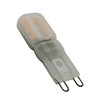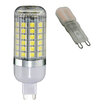We have a lounge with a high ceiling - one of those with no attic, just the ceiling following the underside of the roof timbers. In the middle there's a flat strip where it's boarded horizontally underneath the steel ridge beam. From the old attic, I've been able to get access to the end of the ridge beam and can see down the small space - the plasterboard is flush to the underside of the RSJ flange and is fastened at each side to the sloping timbers. At least no problem fishing a cable through 
I picked up a rather nice, but large and heavy, ceiling fan/light fitting at a local charity shop and want to get it put up.
I was hoping there'd be some battens running across to screw into - but no such luck
The RSJ flange is a little over 4" wide, and the mounting holes in the fan hanging bracket are slots allowing a range of around 3½ to 4½" between centres. That does mean that I could (theoretically) put a screw either side of the flange - but providing something for the screw to go into would be problematic, working 7' down a narrow gap (must be scope for gynaecologist or proctologist jokes there).
The options I've come up with so far are :
Oh yes, here's a photo from the estate agents brochure, unfortunately it doesn't show the highest bit of the ceiling I'm referring to.

I picked up a rather nice, but large and heavy, ceiling fan/light fitting at a local charity shop and want to get it put up.
I was hoping there'd be some battens running across to screw into - but no such luck
The RSJ flange is a little over 4" wide, and the mounting holes in the fan hanging bracket are slots allowing a range of around 3½ to 4½" between centres. That does mean that I could (theoretically) put a screw either side of the flange - but providing something for the screw to go into would be problematic, working 7' down a narrow gap (must be scope for gynaecologist or proctologist jokes there).
The options I've come up with so far are :
- Nail a round piece of wood (which would end up as a visible pattress) through the plasterboard to the RSJ - and then screw the hanging bracket to the pattress. But I don't know anyone with a Hilti to nail it on with so that's out, and there's also the issue that there's 2off T&E cables running along there and I'd be "a tad annoyed" if a nail went through one (or both) of them).
- Drill and tap the flange, and either mount the bracket direct or use a pattress. Doable, but not easy working on top of ladders that are probably a bit short for the working height.
- Cut a hole in the plasterboard either side of the flange, manipulate some bits of batten in there, then screw up a piece of wood (same visible pattress as first option) so the battens clamp down onto the flange. The pattress would need to be big enough to cover the holes in the plasterboard.
- The issues of working at that distance notwithstanding, the above but manipulating the battens down the gap and somehow positioning them in the right place.
Oh yes, here's a photo from the estate agents brochure, unfortunately it doesn't show the highest bit of the ceiling I'm referring to.
Last edited:




